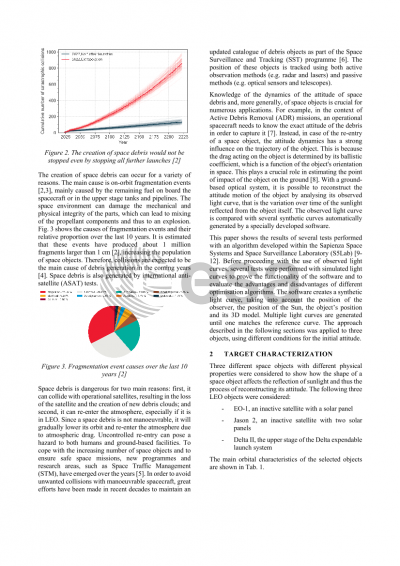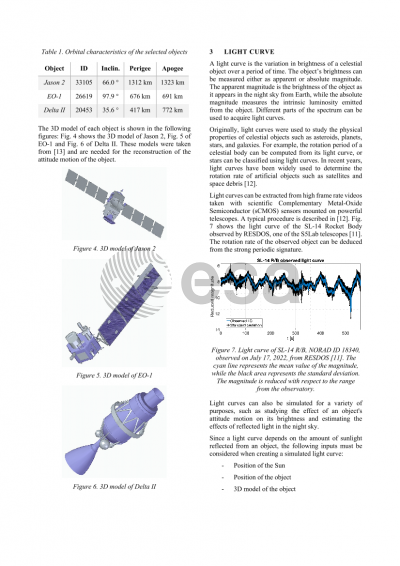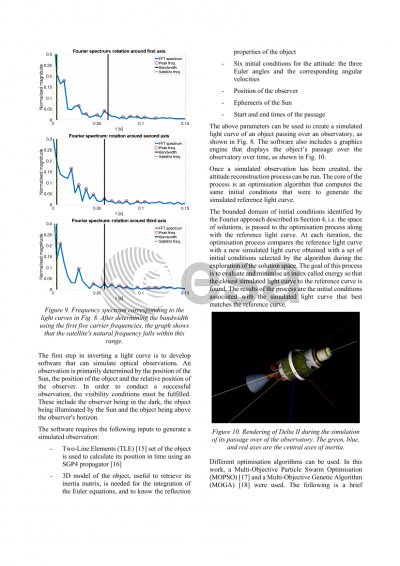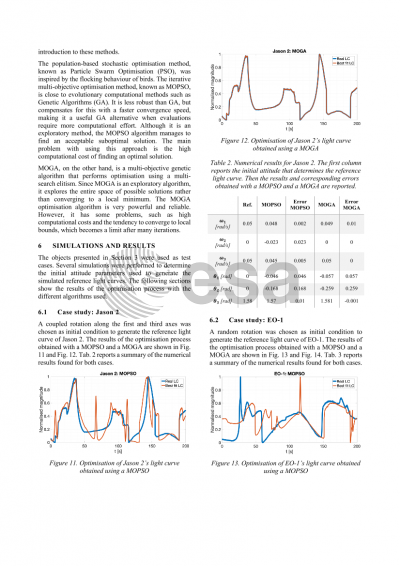Document details
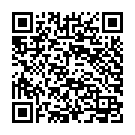
Abstract
Space debris has recently emerged as a major problem in the planning and execution of space missions. Due to the recent widespread placement of satellite mega constellations in LEO orbits, where the majority of the catalogued debris lies, the necessity of monitoring such uncontrolled objects has increased in order to recognize their orbits and maintain an up-to-date catalogue. Also, the attitude motion estimation of an object is fundamental to improve orbit determination methodologies and to support eventual Active Debris Removal (ADR) missions. A vast observatory network that can integrate various observation strategies is operated by Sapienza S5lab, whose researchers gained considerable experience throughout the years concerning space debris detection activities. For this study, space debris lightcurves were extracted using sCMOS sensors installed on high slew rate telescopes. An object lightcurve enables attitude motion reconstruction, which will be illustrated here. This is based on a comparison between the object actual lightcurve and a synthetic one that was created by altering the initial conditions for the attitude motion while taking into account the observer's motion, the Sun's position, the position of the object and its 3D model. A genetic algorithm is used to build a number of synthetic lightcurves by varying the attitude motion initial conditions until one of them matches the observed one. Along with the lightcurve extraction and attitude reconstruction procedures, observation strategies for acquiring lightcurves will be discussed. Finally, the results of the investigation regarding potentially hazardous debris will be presented.
Preview

